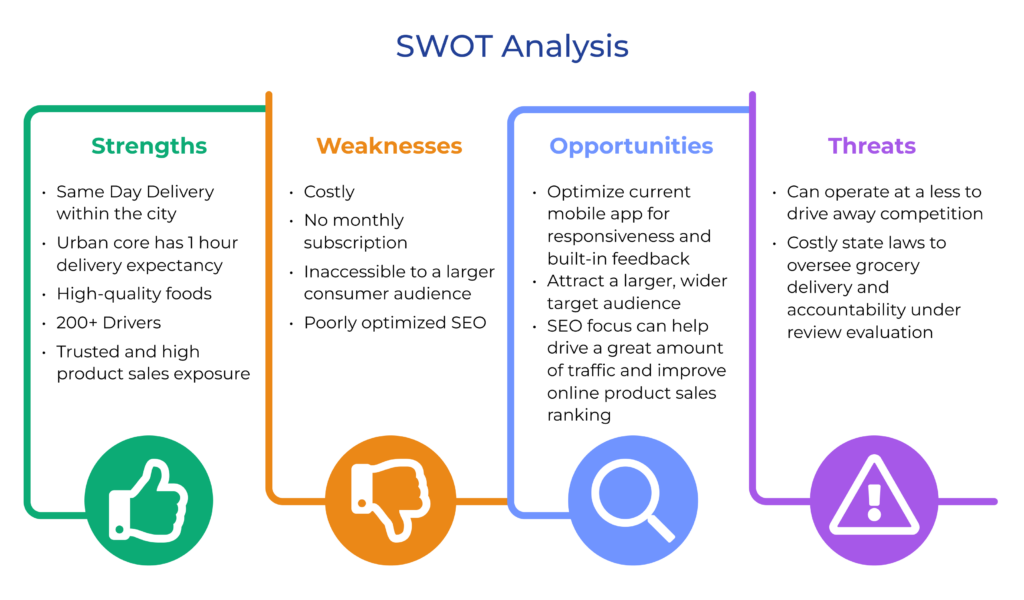
Get Started
Graphite's supplier management tool helps you onboard faster, cut time on risk reviews and streamline supplier validations. Save time and money.
July 12 2023
How to Conduct an Internal Procurement Opportunity Analysis to Gain Procurement Insights on Key Stakeholders
Do you know the decision-makers and influencers who significantly influence your procurement processes and activities? There are key procurement insights and opportunities ready to be tapped here. More importantly, not knowing who your key players are can lead to poor decision-making, delays, and missed opportunities for collaboration.
Your procurement team can overcome this obstacle by conducting a thorough internal procurement opportunity analysis to ensure you engage with the right people from the start.
Start Internal Procurement Opportunity Analysis by Identifying Your Most Critical Internal Stakeholders
With internal procurement opportunity analysis based on the traditional SWOT framework, you can better understand your strategic position while also spotlighting those key decision-makers and influencers who are pivotal to your procurement team’s operational efficiency and success.
A procurement SWOT is a tool that offers procurement organizations valuable insights into your most critical internal partners. By assessing internal stakeholders’ strengths, weaknesses, potential opportunities, and risks, you can develop more effective procurement strategies for planning and resource allocation throughout the lifecycle of your projects.
Internal Opportunity Assessment Based on the SWOT Principle
Internal procurement opportunity analysis means analyzing factors that operate within your company. While you can look at processes too, you’ll see better results by focusing on internal stakeholders.
The idea is to identify individual or grouped internal stakeholders that have the most potential to add value to your procurement systems. This could be through more effort, more involvement, or even mitigation of risks and limitations. Here are some steps rooted in the SWOT principle that you can use as a general guideline to conduct your internal procurement opportunity analysis:
1. Create a SWOT-Based Procurement Opportunity Analysis Framework
Divide a document into four sections representing strengths, weaknesses, opportunities, and threats. Or use a SWOT analysis template like the one below for your procurement opportunity analysis:

- Strengths: Determine any unique strengths and capabilities that could contribute significantly to your procurement strategy. A stakeholder group may have specialized skills, influential positions, or extensive knowledge you can leverage for your procurement operations.
- Weaknesses: Evaluate any limitations impacting a stakeholder’s ability to contribute effectively to procurement activities. Understanding these limitations allows you to determine whether additional support, training, or resources are needed to address these weaknesses or mitigate potential risks.
- Opportunities: Identify potential partners who can leverage emerging opportunities or contribute to new initiatives within your procurement department. These key collaborators can adapt to changing circumstances, explore innovative approaches, or connect with external networks that bring additional opportunities.
- Threats: Assess potential threats or challenges that could hinder a stakeholder’s engagement or effectiveness in the project, such as competing priorities, resistance to change, or conflicting interests. By identifying these threats, you can create strategies to address them proactively.
2. Analyze and Prioritize Procurement Opportunities
Next, review the strengths, weaknesses, opportunities, and threats you’ve identified. Analyze the relationships between them and prioritize based on their potential impact and importance to your organizational objectives and procurement functions.
3. Develop Strategies to Leverage the Findings of your Procurement Opportunity Analysis
Based on the findings of your procurement opportunity analysis, establish procurement strategies to capitalize on strengths, address weaknesses, seize opportunities, and mitigate threats. Make sure your approach aligns with both the procurement function and overall business goals in addition to the procurement insights you have deduced.
4. Monitor and Review Each Procurement Opportunity
Regularly revisit and update your procurement opportunity analysis as your business landscape evolves. Monitor changes in market conditions and business performance. Adapt your strategies according to any new procurement insights you find.
Use your Procurement Opportunity Analysis to Re-Allocate Key Resources
A procurement opportunity analysis offers a comprehensive understanding of key internal partners so you can better prioritize them based on their strengths and ability to capitalize on opportunities and overcome threats. Use this in-depth assessment to allocate the right resources and build a powerful alliance of the internal partners and procurement professionals who are best positioned to add to the success of your strategic procurement goals, as well as those of your company.
Want to learn about additional real-world applications of SWOT in the procurement process? Read our e-book >> https://www.graphiteconnect.com/resource/swot-in-procurement/
Let Graphite Help
Graphite is purpose-built to drive digital transformation that enables greater procurement efficiency and transparency. Learn how we can help you unlock new opportunities for enhanced cost savings and business continuity.
Request a Demo




